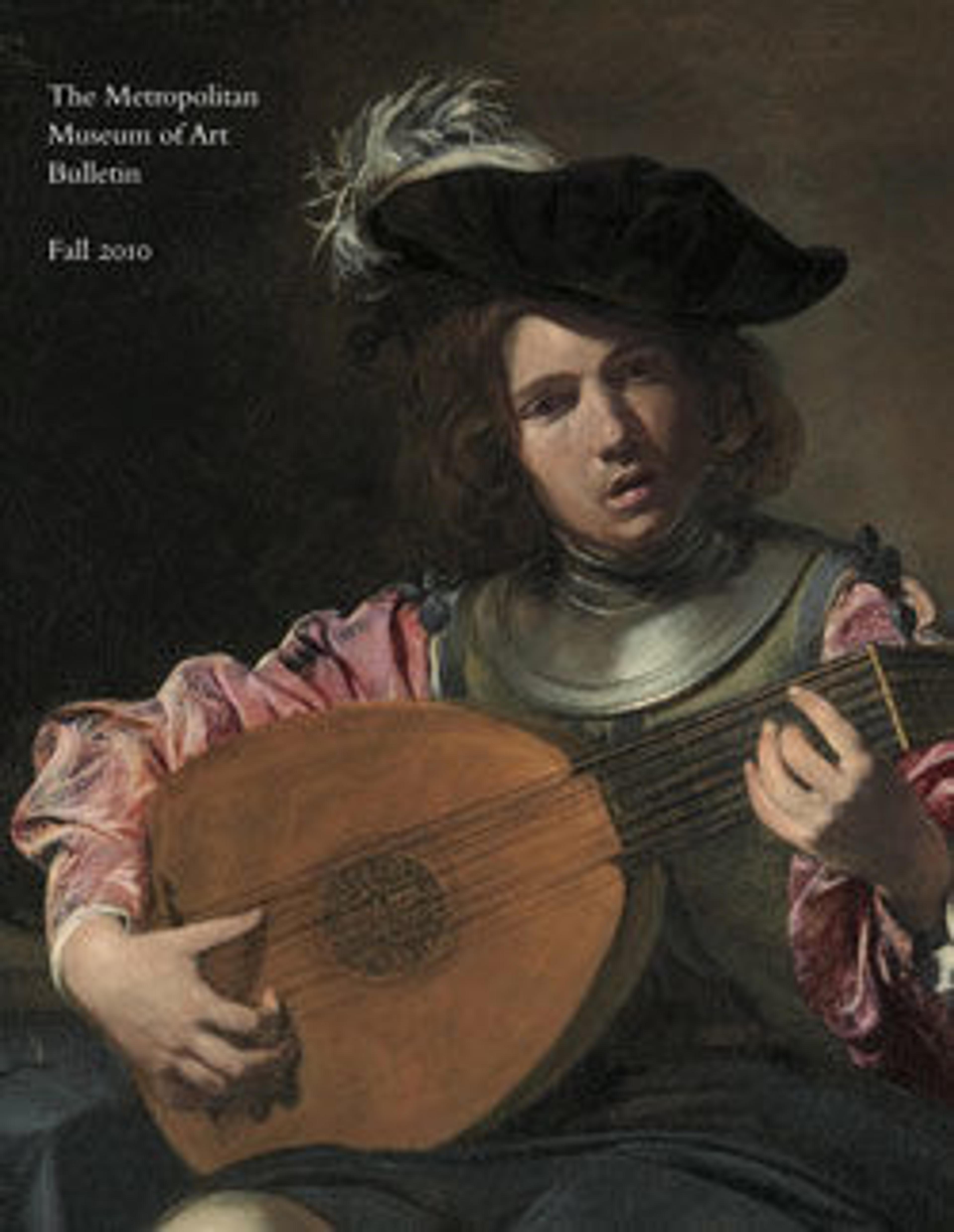Evening dress
A rare example of Paul Poiret's early revolutionary designs loosely based on the upright, columnar, high-waisted styles worn in ancient Greece, this gown is an innovative melding of the avant-garde and the traditional. The tubular shape and graphic horizontal stripes are harbingers of the modern era, while the below-the-knee gathering of the overskirt suggests the "hobble skirt" that Poiret introduced in 1910 and was briefly the height of fashion. Decorative touches taken from traditional sources mollify the radical form. One of Poiret's signature decorative techniques was to use folkloric textiles and trims that he collected on his travels. Here the collar and cuffs are fashioned from a traditional French pleated linen bonnet, and brightly colored brocade ribbons that would have adorned a festive folk bonnet or costume encircle the raised waistline.
Requiring less restrictive undergarments and conforming more to the natural shape of the body, Poiret's designs of 1908–11 are regarded as pivotal in the transition from the rigidly corseted silhouettes of the Victorian and Edwardian eras to styles providing greater freedom and comfort in dress that would characterize twentieth-century fashion.
Artwork Details
- Title: Evening dress
- Designer: Paul Poiret (French, Paris 1879–1944 Paris)
- Date: 1910
- Culture: French
- Medium: silk, linen
- Credit Line: Brooklyn Museum Costume Collection at The Metropolitan Museum of Art, Gift of the Brooklyn Museum, 2009; Gift of Ogden Goelet, Peter Goelet and Madison Clews in memory of Mrs. Henry Clews, 1961
- Object Number: 2009.300.1289
- Curatorial Department: The Costume Institute
More Artwork
Research Resources
The Met provides unparalleled resources for research and welcomes an international community of students and scholars. The Met's Open Access API is where creators and researchers can connect to the The Met collection. Open Access data and public domain images are available for unrestricted commercial and noncommercial use without permission or fee.
To request images under copyright and other restrictions, please use this Image Request form.
Feedback
We continue to research and examine historical and cultural context for objects in The Met collection. If you have comments or questions about this object record, please contact us using the form below. The Museum looks forward to receiving your comments.
